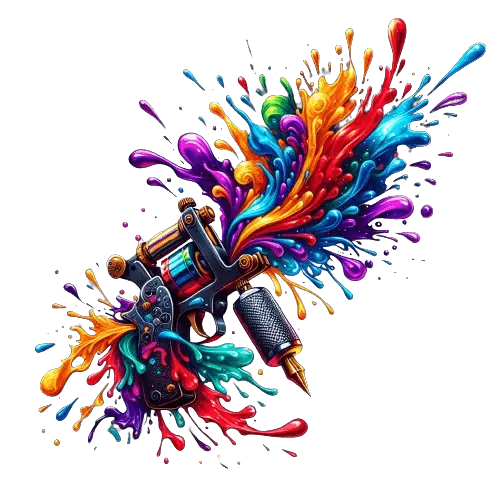The Kokopelli tattoo represents fertility, music, and happiness in native american culture. Kokopelli is a popular tattoo choice due to its rich symbolism and connection to nature.
Understanding The History Of Kokopelli
The Origins Of Kokopelli In Native American Culture
Kokopelli, a popular figure in native american culture, holds great significance with its origins deeply rooted in ancient traditions. Understanding the history behind kokopelli tattoos can help us appreciate the rich cultural heritage associated with this iconic symbol.
- Kokopelli is believed to have originated from the ancient puebloan tribes, which lived in the southwestern united states around 2,000 years ago.
- The figure of kokopelli is often depicted as a humpbacked flute player, symbolizing music, fertility, and a bringer of joy.
- The word “kokopelli” is derived from the hopi language, meaning “wooden-backed.” This refers to the deity’s humpbacked appearance often associated with a wooden flute.
- Kokopelli is regarded as a key figure in native american mythology, representing various concepts such as fertility, agriculture, and rain.
- The iconography of kokopelli can be found in rock art, pottery, and other artifacts throughout the southwest region, portraying the deity’s significance in their daily lives.
- The symbol of kokopelli holds different interpretations among various native american tribes, highlighting its cultural diversity and adaptability.
- Kokopelli’s influence extends beyond the native american community, capturing the fascination of people from different backgrounds, leading to its popularity as a tattoo design.
Cultural Significance Of Kokopelli In Native American Mythology
Within native american mythology, kokopelli embodies numerous cultural beliefs and concepts that have been passed down through generations. Exploring the cultural significance of kokopelli allows us to gain a deeper understanding of its symbolism.
- Kokopelli is often associated with fertility and agriculture, symbolizing the abundance of crops and the prosperity of communities.
- The deity’s flute playing is believed to attract rain and ensure an ample harvest, making him a revered figure among agricultural societies.
- Kokopelli is also associated with the concept of joy and celebration, bringing a sense of merriment and happiness wherever he goes.
- Some native american tribes view kokopelli as a trickster figure, representing the balance between mischief and good fortune.
- The deity’s humpbacked appearance is said to represent the hardships and challenges faced in life, reminding individuals to find strength and resilience in the face of adversity.
- Kokopelli’s presence in native american mythology highlights the interconnectedness between humans and the natural world, emphasizing the importance of preserving the environment and living in harmony with nature.
By delving into the history and cultural significance of kokopelli, we can gain a deeper appreciation for this enduring symbol and the values it represents in native american mythology. Whether adorned as a tattoo or celebrated in artwork and music, kokopelli continues to captivate hearts and minds with its timeless appeal.
The Symbolism Behind Kokopelli Tattoos
Kokopelli tattoos have gained popularity for their unique and captivating symbolism. These tattoos often hold significant meaning to those who choose to ink the image on their bodies. From representing fertility and virility to embodying music, dance, and celebration, the symbolism behind kokopelli tattoos is as intricate as the tattoos themselves.
Exploring The Intricate Symbolism Of Kokopelli Tattoos
- Kokopelli tattoos hold deep cultural symbolism, rooted in native american mythology.
- The figure of kokopelli is often depicted as a humpbacked flute player, representing a mischievous and playful spirit.
- Kokopelli is seen as a symbol of fertility, abundance, and the cycle of life.
- The tattoos also represent the connection between humans and nature, emphasizing the importance of harmony and balance.
Representations Of Fertility And Virility In Kokopelli Tattoos
- Kokopelli tattoos are commonly associated with fertility and childbirth.
- The figure is believed to bring blessings of abundance, prosperity, and good fortune to couples hoping to conceive.
- The tattoos serve as a source of inspiration and hope for those seeking to start a family or embrace their role as parents.
- Kokopelli’s phallic symbol emphasizes virility and masculine energy, making it a popular choice for men looking to showcase their strength and vitality.
Kokopelli As A Symbol Of Music, Dance, And Celebration
- Kokopelli tattoos also embody the spirit of music, dance, and celebration.
- The figure is often depicted playing the flute, representing the power of music to uplift the soul and create a sense of joy and unity.
- Music and dance have deep cultural significance in many native american traditions, making kokopelli tattoos a way to honor and celebrate this rich heritage.
- These tattoos are a reminder to embrace life’s festivities, to let loose, and to find happiness in moments of celebration.
The symbolism behind kokopelli tattoos is rich and diverse, encompassing themes of fertility, virility, music, dance, and celebration. These tattoos serve as powerful reminders of our connection to nature, our capacity for joy and abundance, and our role in the cycle of life.
Whether you choose to embrace the fertility aspect or simply resonate with the spirit of music and celebration, a kokopelli tattoo is a meaningful way to express your individuality and embrace the deeper meanings of life.
Interpretations Of Kokopelli Tattoos Across Different Cultures
Kokopelli tattoos are not only visually captivating but also carry deep cultural meanings. This ancient fertility deity, often depicted as a humpbacked flute player, has long fascinated people across different cultures. In this blog post, we will explore the interpretations of kokopelli tattoos and how they resonate with various societies.
From the significance in southwestern native american tribes to their prevalence in contemporary pop culture and modern tattoo artistry, kokopelli’s symbolism holds a wealth of stories to be uncovered.
Kokopelli In Southwestern Native American Tribes
- Kokopelli is an iconic figure in southwestern native american tribes such as the hopi, zuni, and pueblo people.
- These tribes believe that kokopelli, as a fertility deity, brings abundance, good fortune, and harvest.
- Kokopelli is also associated with the arrival of spring, bringing with him the promise of new beginnings and new life.
- The flute played by kokopelli represents the music that connects the spirit world with the earthly realm.
- In native american culture, kokopelli is often seen as a source of inspiration for creativity, music, and overall joy in life.
Kokopelli Tattoos In Contemporary Pop Culture
- In recent years, kokopelli tattoos have gained popularity among tattoo enthusiasts, reaching beyond native american tribal boundaries.
- Many individuals getting these tattoos resonate with kokopelli’s symbolism of abundance, fertility, and the celebration of life.
- Contemporary interpretations of kokopelli tattoos often incorporate modern elements, such as vibrant colors and intricate designs.
- These tattoos have become a means for individuals to express their connection to nature, creativity, and the spirit of adventure.
- Kokopelli tattoos have also found their place in popular culture, appearing in various forms of art, fashion, and media.
Kokopelli’S Influence In Modern Tattoo Artistry
- Tattoo artists have embraced kokopelli as an enduring symbol that allows for creative interpretations.
- Modern tattoo artistry brings forth unique designs that highlight kokopelli’s essence in bold and imaginative ways.
- Tattoos featuring kokopelli often showcase intricate details, such as his flute-playing pose, humpback, and distinctive headdress.
- Artists incorporate elements of nature, such as flowers, feathers, and animals, to further enrich the meaning of the tattoo.
- These tattoos celebrate personal connection, spirituality, and the beauty found in the fusion of ancient traditions with modern artistic expression.
Kokopelli tattoos hold significant interpretations across different cultures. From its roots in southwestern native american tribes to its widespread popularity in contemporary pop culture and modern tattoo artistry, kokopelli’s symbolism continues to captivate people’s imagination. Whether seeking fertility, abundance, creativity, or a connection to nature, these tattoos offer a unique way to express personal stories and beliefs.
So, if you’re considering a kokopelli tattoo, embrace the rich cultural heritage behind this iconic figure and let it resonate with your own journey of life’s celebrations and new beginnings.
Choosing The Perfect Design For Your Kokopelli Tattoo
Kokopelli tattoos are a popular choice for individuals who want to showcase their love for native american culture and spirituality. These tattoos often feature the iconic kokopelli, a fertility deity known for his flute-playing abilities and mischievous nature. When it comes to choosing the perfect design for your kokopelli tattoo, there are a few key factors to consider.
From popular kokopelli tattoo designs and variations to determining the placement and size, here’s a guide to help you customize your tattoo and make it truly unique.
Popular Kokopelli Tattoo Designs And Variations
- Traditional kokopelli: The traditional design portrays kokopelli as a hunchbacked figure playing a flute. This classic design represents fertility, joy, and abundance.
- Native american kokopelli: This variation incorporates traditional native american symbols, such as feathers, dreamcatchers, and tribal patterns, alongside kokopelli. It celebrates the rich culture and heritage of native americans.
- Kokopelli with nature elements: Many kokopelli tattoos feature elements of nature, such as flowers, trees, and animals, to symbolize the connection between kokopelli and the earth. This design emphasizes the deity’s role as a bringer of harvest and prosperity.
Determining The Placement And Size Of Your Kokopelli Tattoo
- Arm: The upper arm is a common placement for kokopelli tattoos, allowing for easy visibility and flexibility in terms of size.
- Back: The back provides a larger canvas for intricate and detailed designs. You can choose to have a smaller kokopelli tattoo on the shoulder or go for a full-back piece.
- Leg: Kokopelli tattoos on the leg can be placed on the calf or thigh, offering a comfortable and visible location. The size can vary depending on personal preference.
Tips For Customizing Your Kokopelli Tattoo Design
- Incorporate personal elements: Consider adding personal symbols or attributes that hold significant meaning to you. It could be a birthstone, initials, or a meaningful quote.
- Color choice: While many kokopelli tattoos are done in black ink, you can also experiment with colors to make your tattoo stand out. Consider using vibrant shades to bring life and energy to the design.
- Seek professional advice: Consult with an experienced tattoo artist who specializes in native american or tribal designs. They can help you create a custom design that perfectly represents your vision.
Remember, your kokopelli tattoo should be a reflection of your personality and beliefs. Take your time to explore different designs, consider the symbolism behind each element, and find a skilled tattoo artist who can bring your vision to life.
Tips For Caring For Your Kokopelli Tattoo
Kokopelli tattoos have become increasingly popular as a way to express creativity, spirituality, and a connection to native american culture. These unique tattoos feature the iconic figure of kokopelli, a flute-playing deity associated with fertility, joy, and good fortune. If you’re considering getting a kokopelli tattoo or already have one, it’s crucial to understand how to properly care for it.
In this section, we’ll discuss some essential tips for caring for your kokopelli tattoo, including aftercare for fresh tattoos, long-term preservation and maintenance, and avoiding common tattoo care mistakes.
Caring For Fresh Kokopelli Tattoos: Aftercare Tips
- Keep it clean: Gently wash your tattoo with a mild antibacterial soap and lukewarm water. Pat it dry with a clean cloth or let it air dry to prevent irritation or infection.
- Apply a thin layer of moisturizer: After cleaning, apply a thin layer of tattoo-specific moisturizer to keep the skin hydrated and prevent excessive dryness or peeling.
- Avoid scratching or picking: It’s normal for your tattoo to itch during the healing process, but refrain from scratching or picking at it as it can lead to scarring or color loss.
- Protect from the sun: Shield your tattoo from direct sunlight by covering it with clothing or using a broad-spectrum sunscreen with a high spf. Sun exposure can fade the colors and damage the tattooed skin.
- Avoid soaking in water: For the first few weeks, avoid swimming, hot tubs, or soaking in baths as excessive moisture can hinder the healing process.
Long-Term Care For Your Kokopelli Tattoo: Preservation And Maintenance
- Moisturize regularly: Even after your tattoo is healed, moisturize it daily to maintain its vibrancy and prevent dryness. Use a fragrance-free lotion or tattoo-specific aftercare product to keep the skin supple and healthy.
- Protect from excessive sun exposure: Ongoing sun protection is crucial to preserving the colors and details of your tattoo. Apply sunscreen generously whenever you’ll be exposed to the sun for an extended period.
- Stay hydrated: Drinking plenty of water is essential for overall skin health. Hydrated skin helps tattoos remain vibrant and prevents them from looking dull or faded.
- Avoid excessive friction: Be mindful of clothing, accessories, or activities that may rub against or irritate your tattoo. Avoid tight-fitting clothes or equipment that may cause friction and constantly monitor for any signs of irritation or discomfort.
- Consider touch-ups: Over time, tattoos may fade or lose their sharpness. If you notice significant fading or discoloration, consult with a professional tattoo artist about potential touch-ups to restore your kokopelli tattoo’s original allure.
Avoiding Common Tattoo Care Mistakes With Kokopelli Tattoos
- Don’t over-moisturize: While moisturizing is essential, applying too much product can suffocate the tattooed skin, prolong the healing process, and potentially cause adverse reactions. Use a small amount and allow the skin to absorb it fully.
- Avoid excessive exposure to water: Beyond the initial healing phase, limit prolonged exposure to water, especially in chlorinated pools or hot tubs. Excessive moisture can lead to fading, blurring, or infection.
- Don’t scratch or pick at scabs: It’s normal for scabs to form during the healing process. Resist the urge to scratch or pick at them, as this can disrupt the healing process and potentially damage the tattoo.
- Avoid using harsh products: Steer clear of harsh soaps, scrubs, or exfoliants on your tattooed skin. These can strip away the ink and irritate the delicate healing tissue.
- Don’t ignore signs of infection: If you notice excessive swelling, redness, pus, or prolonged pain around your tattoo, consult a healthcare professional immediately. Prompt treatment can prevent complications and preserve the integrity of your tattoo.
Remember, caring for your kokopelli tattoo is essential for maintaining its beauty and longevity. By following these aftercare tips, engaging in long-term preservation, and avoiding common tattoo care mistakes, you can ensure that your kokopelli tattoo remains a stunning symbol of your personal style and connection to native american culture.
Frequently Asked Questions Of Kokopelli Tattoo Meaning
What Is The Meaning Of A Kokopelli Tattoo?
A kokopelli tattoo represents fertility, joy, music, and the spirit of native american cultures.
What Do The Symbols In A Kokopelli Tattoo Represent?
The symbols in a kokopelli tattoo often represent the interconnectedness of nature, the cycle of life, and the harmony between humans and the natural world.
Can A Kokopelli Tattoo Be Personalized?
Yes, a kokopelli tattoo can be personalized with additional elements like flowers, feathers, or tribal designs to add meaning and make it unique to the individual.
Conclusion
The kokopelli tattoo is not just a decorative body art, but it carries significant meanings rooted in native american culture. It symbolizes fertility, joy, and abundance, making it a symbol of life’s blessings. Native tribes also believed in kokopelli’s role as a fertility deity, bringing new life and prosperity to the community.
With its distinctive flute-playing figure, this tattoo represents creativity, music, and celebration of life. The kokopelli’s hunchbacked form is often seen as a reminder to embrace life’s ups and downs, finding harmony in the ebb and flow of existence. As a powerful symbol of positive energy and cultural heritage, the kokopelli tattoo can be a profound expression of one’s connection to nature, music, and the cycles of life.
Whether you choose a minimalist design or a more detailed depiction, embracing the kokopelli tattoo allows you to carry the spirit of joy, abundance, and creativity with you wherever you go.




